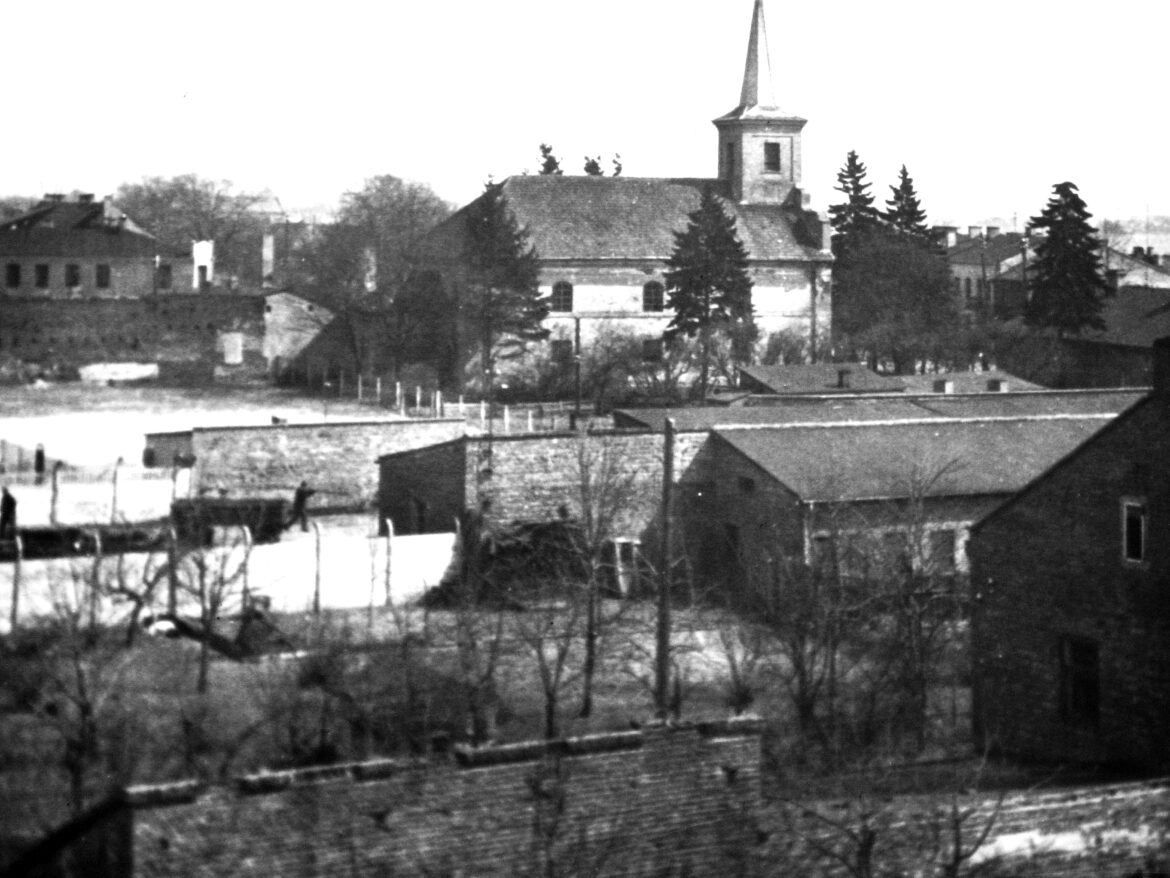Before World War II, about 40 percent of the Bełchatów population was Jewish. Most of them worked in weaving and small-scale textile industries. In March 1941, the Germans established a ghetto in the city gathering there five thousand people, including Jews from other nearby towns Kleszczów, Dobrzelów and Bełchatówek.
A strict regime was introduced in the ghetto from the very beginning. The Jews confined there were ordered to stay in their houses, and they were allowed to leave only at strictly defined hours. The German occupier deprived them of fuel, and the Jews assigned to manual labor were forced to work as slaves. The daily food ration was 250 grams of bread.
Already in the autumn of 1940, a sewing workshop of the Frajtag brothers was established on its premises, which operated for two years. The sewing room gained special importance after the outbreak of the war with the Soviet Union, because it sewed and repaired the equipment for the Wehrmacht there. At the end of its activity, it employed over 600 people.
The Jewish police and the Council of Elders dealt with administrative functions in the ghetto. After an attempt to intervene with the German authorities regarding the allocation of fuel for the kitchen, one of its presidents, A. Ehrlich was dismissed from his post and then hanged. His successor, Bogdański, was transported to the extermination camp from the station in Radogoszcz.
The community living in the ghetto was killed in mass German executions and as a result of epidemics caused by disastrous sanitary and nutritional conditions. In the spring of 1942, the German occupation authorities began preparations for the liquidation of the ghetto. Tailor and carpentry workshops were moved with their employees to the ghetto in Łódź. The remaining 5,000 Jews were transported to the extermination camp in Chełmno on the Ner. Last transport to Chelmno had place on August 18, 1942 .





